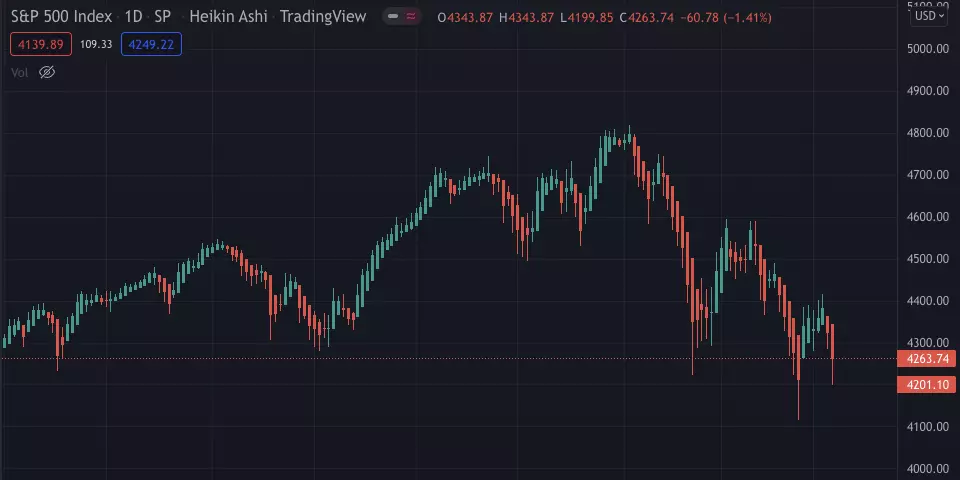Options are a great tool and can be used in many different creative ways to profit from the wild market conditions out there. One of those ways is to use the longer expiration dates to your advantage when buying LEAPS Call options.
LEAPS Call Options are better than buying 100 shares because they offer you reduced risk and give you more buying power at the cost of a small premium. Buying LEAPS deep in the money, with an expiration date longer than a year, will give you the same benefits as owning 100 shares at half the price.
If you find this confusing and don't know what options contracts are, there's no need to worry. I have created a complete options guide for you to better understand them:
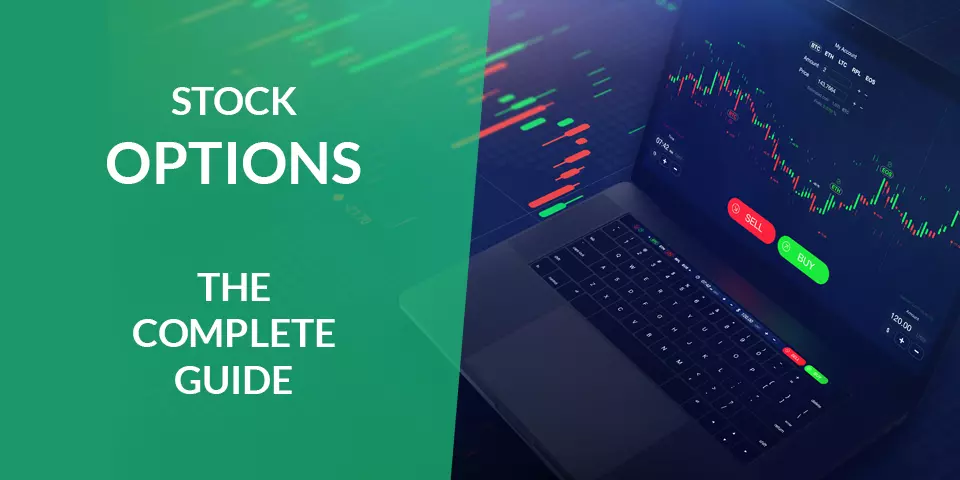
What are LEAPS Options?
LEAPS is an acronym for "Long-term Equity AnticiPation Securities". Simply put, LEAPS are options contracts that have an expiration date longer than one year and up to three years from issue. They function in the exact same way as the other listed options but they have a longer time until expiration giving buyers more exposure to longer price movements.
LEAPS vs Shares
As mentioned earlier, buying LEAPS deep in the money instead of buying 100 shares gives you the exact same benefits as owning the shares, but the cost is reduced by more than half. The best way to show you the benefits is by getting Apple stock as an example.
The main goal when buying LEAPS is to replicate the movements of the stock price. In this case, we aim to reduce the break-even price as much as possible.
To see what strike price to choose to reduce the break-even price, we will make use of the option's delta value. As a reminder, delta measures the rate of change in a stock price. In other words, for every $1 movement in the stock price, the option's price will move by the delta.
In our Apple example, we will pick a LEAPS option with an expiration date longer than a year and a delta around 0.95 or higher (for every $1 move in the stock price, the option will move with $0.95).
By choosing this 0.95 delta we can say that we now have the equivalent of 93 shares of a stock instead of 100 (or 95% of that stock). The expiration date can be as far as possible as we want to mirror holding 100 shares of the stock without worrying about the options expiration.
Costs of the LEAPS Call option
As you know, when buying options you have to pay a premium. However, you will see that this premium is not as high as it may seem at first.
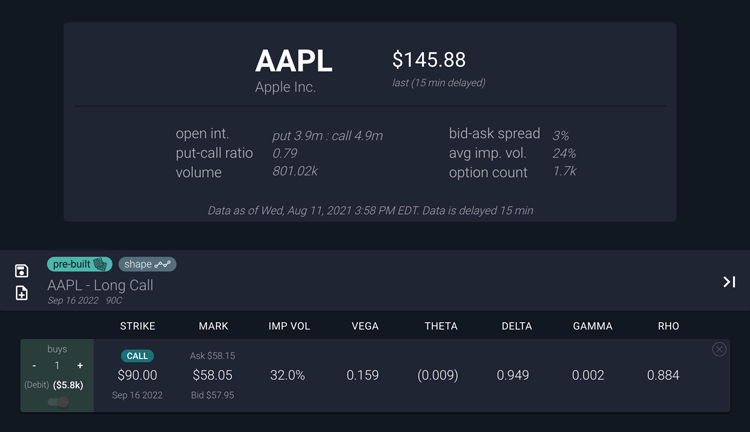
As you can see in the image above, Apple is trading at $145.88 per share and the LEAPS call option at a $90 strike price, with 400 days till expiration and a 0.95 delta will cost around $58.
This means that you will pay $5,800 for this option as opposed to $14,588 if you have bought 100 shares instead. This will save around 60% of the costs giving you the leverage to use this capital somewhere else.
Know the risks
An option's premium has two components: Intrinsic value and extrinsic value. As we have an option that is deep in the money, this means that most of the premium for this option is intrinsic value.
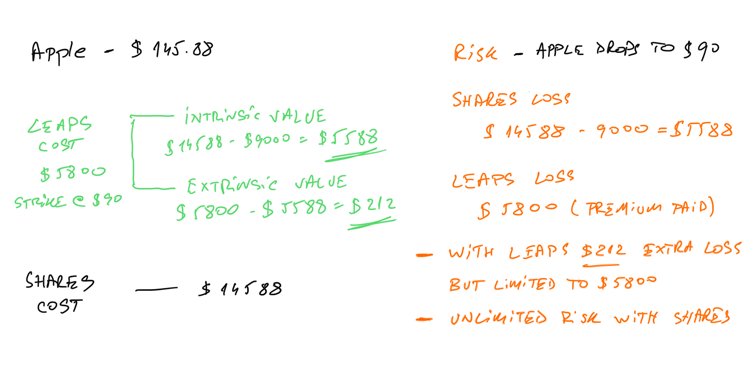
To calculate the intrinsic value, we take the share price of $145.88 and subtract the strike price of $90. This gives us a total of $55.88 or $5,588 as intrinsic value, meaning that if you were to close this option right now, you would receive $5,588 back from that premium.
The rest of the premium is time value or extrinsic value, and to calculate this we simply make the difference between the premium we paid and the intrinsic value giving us a total of $212.
To calculate what is your loss compared to owning shares, we will take the worst-case scenario when this option expires worthless at expiration. In that case, the option will have no intrinsic or extrinsic value, therefore you will lose the premium you paid of $5,800.
We know that an option expires worthless when the share price falls below or hits your strike price. In this case, if you have owned 100 shares of stock and the share price would have dropped to at least $90, you would have lost at least $5,588 ($14,588 - $9000).
Does this number look familiar? This is because this value is equal to the option's intrinsic value. The option's intrinsic value is, by definition, the difference between the stock price and the option's strike price.
| Current Price | Apple Stock | LEAPS @ $90 Strike | 100 Shares @ $145,88 |
|---|---|---|---|
| stock @ $145,88 | Initial Cost | $5,800 | $14,588 |
| stock @ $90 | Max Loss | $5,800 | $5,588 |
| stock @ $0 | Max Loss | $5,800 | $14,588 |
| stock @ $160 | Profit | $1,200 | $1,412 |
| stock @ $160 | ROI | 20% | 10% |
From this side-by-side comparison, you can clearly see that the only risk you have when buying LEAPS compared to owning 100 shares is losing that extra $212. However, buying options will always give you downside protection as your maximum loss is the premium you paid, making LEAPS a much safer alternative in the event of a stock price crash.
One important thing to keep in mind is in case the option will expire worthless, you still have the option to buy the shares at the strike price and get your 100 shares of Apple however, this doesn't make too much sense as you may get them cheaper if the stock price is lower than your strike price, or you could buy another deep in the money LEAPS option for half the price once more.
Another note to make is that the extra $212 of the option's extrinsic value is lost entirely only when the option approaches expiration. You can always recover some of that extrinsic time value if you close the option earlier.
Profit / Loss comparison
As the goal of the LEAPS options was to replicate the stock price movements, the profits you can make are very similar, however, the Return of Investment will be nearly double or more. This is because the cost basis of a LEAPS option is greatly reduced compared to buying 100 shares.
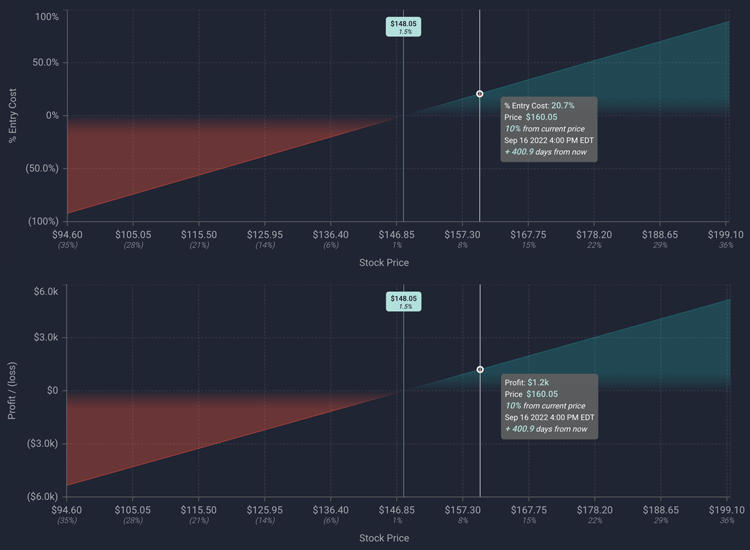
In the graph above, you can see that if the stock price increases by 10% you make $1,412 ($160 - $145.88 times 100) in profit when owning shares, and $1,200 when buying the call option. Since you paid $5,800 for the option, your return of investment is around 20% making LEAPS more lucrative.
Notice the $212 difference is because this graph shows you the profit at expiration where the option's extrinsic time value is lost.
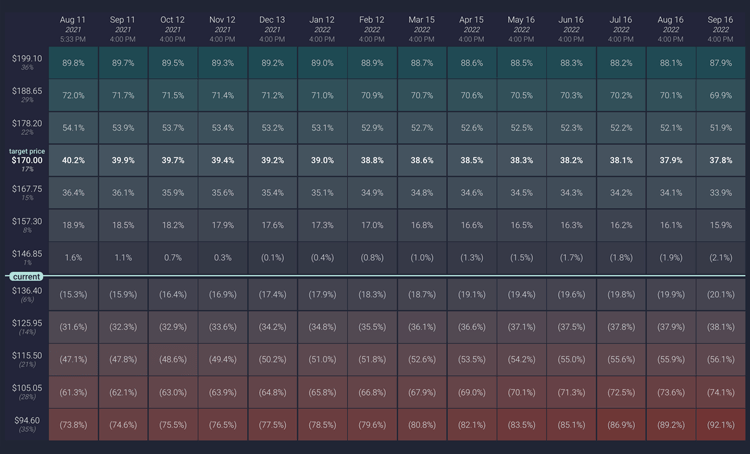
In the above profit/loss table you can see all the various return percentages for Apple LEAPS and how well they replicate the stock's price movements, keeping the break-even point close to zero and giving you greater returns with only a 1% (or $212) difference in extra cost.
Bottom Line
Here's a summary of LEAPS options benefits compared to 100 shares of stock:
- LEAPS options require half of the capital invested.
- They offer you downside protection as the maximum you can lose is the premium you paid.
- The premium you pay is not as expensive as it may seem. When you choose a deep in the money option with a 0.95 delta to replicate the stock's price movements, you will only pay a small extra fee for the option's extrinsic time value. This fee is only lost if the option approaches expiration and you can always recover part of it if you close the option early.
- Even if you have the exact same profit, the return of investment can be more than double as the cost basis of the option is reduced in half.






